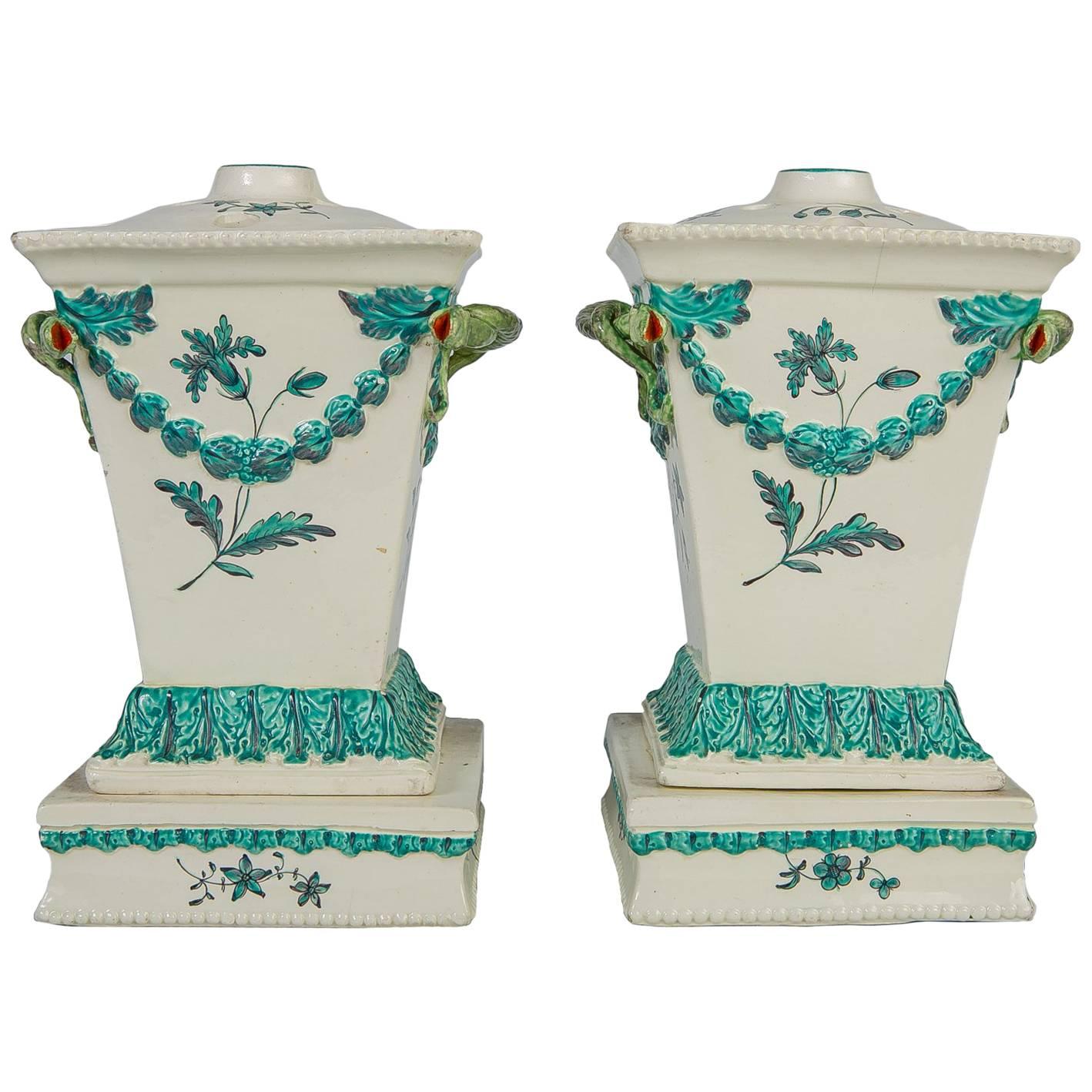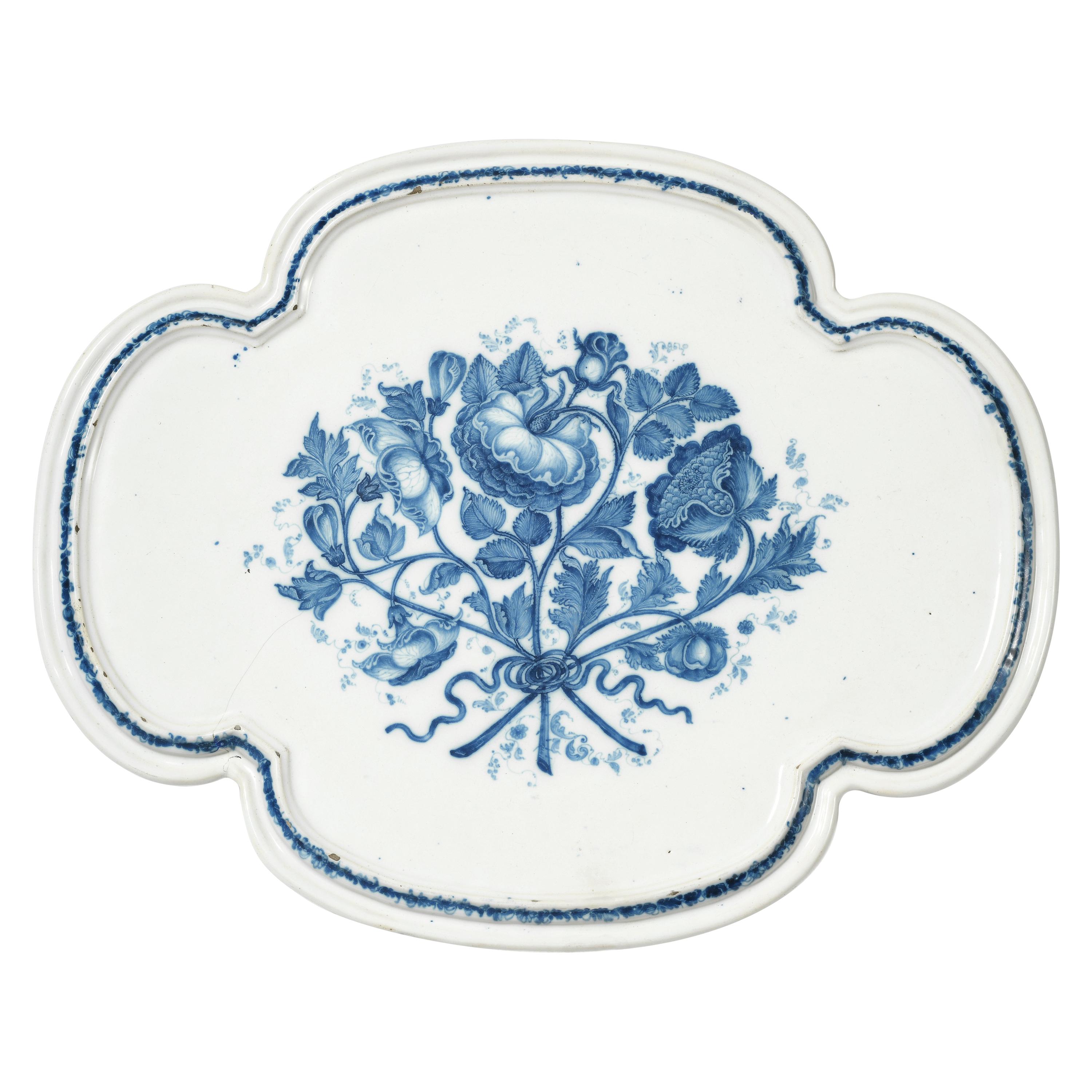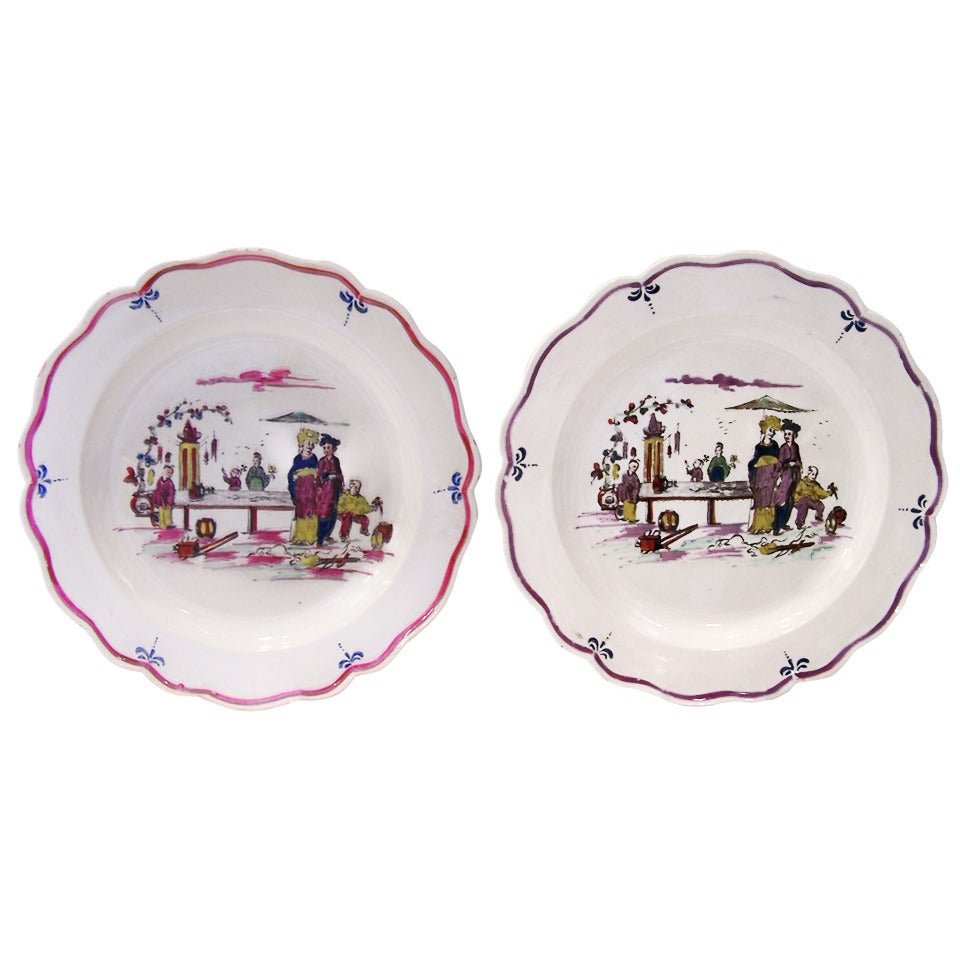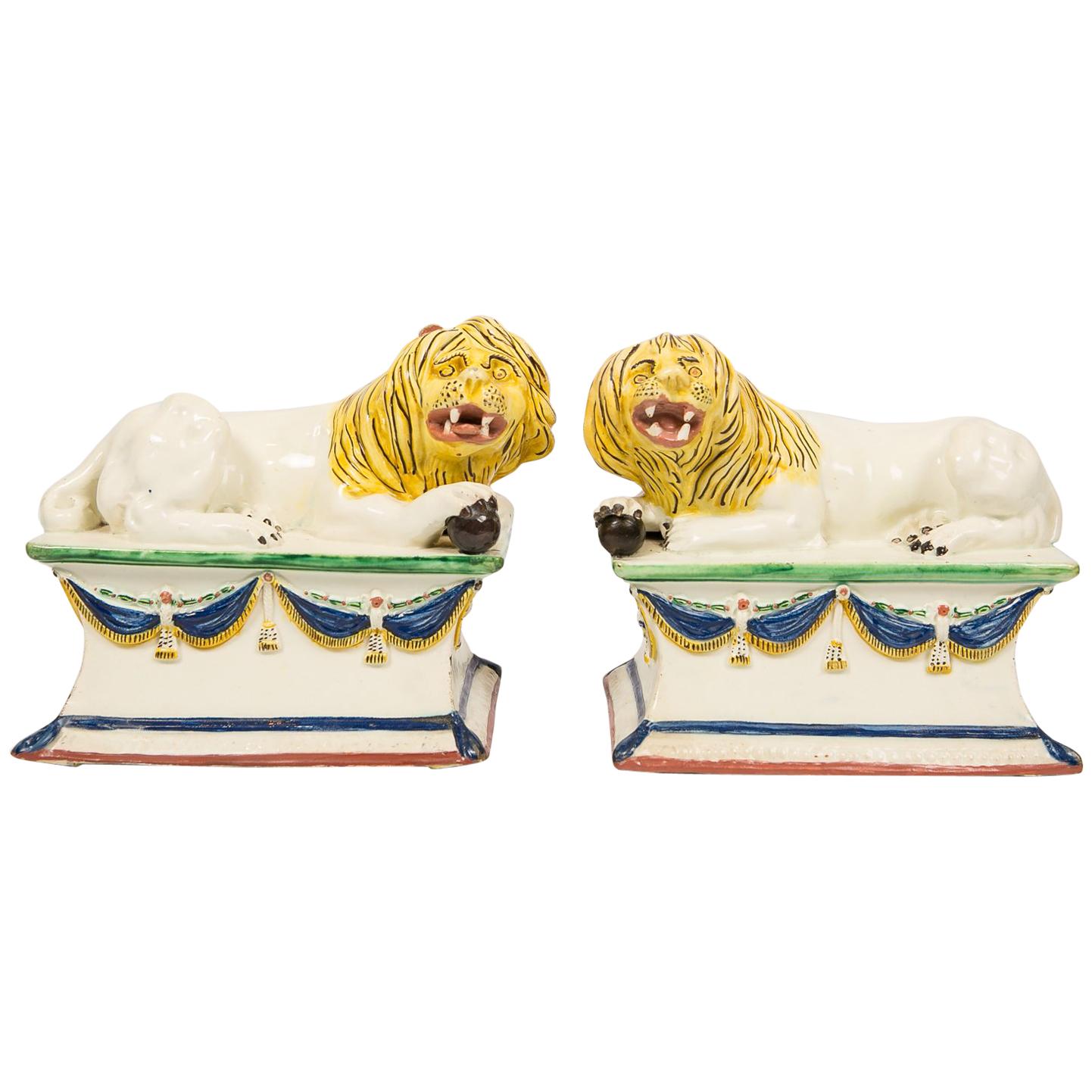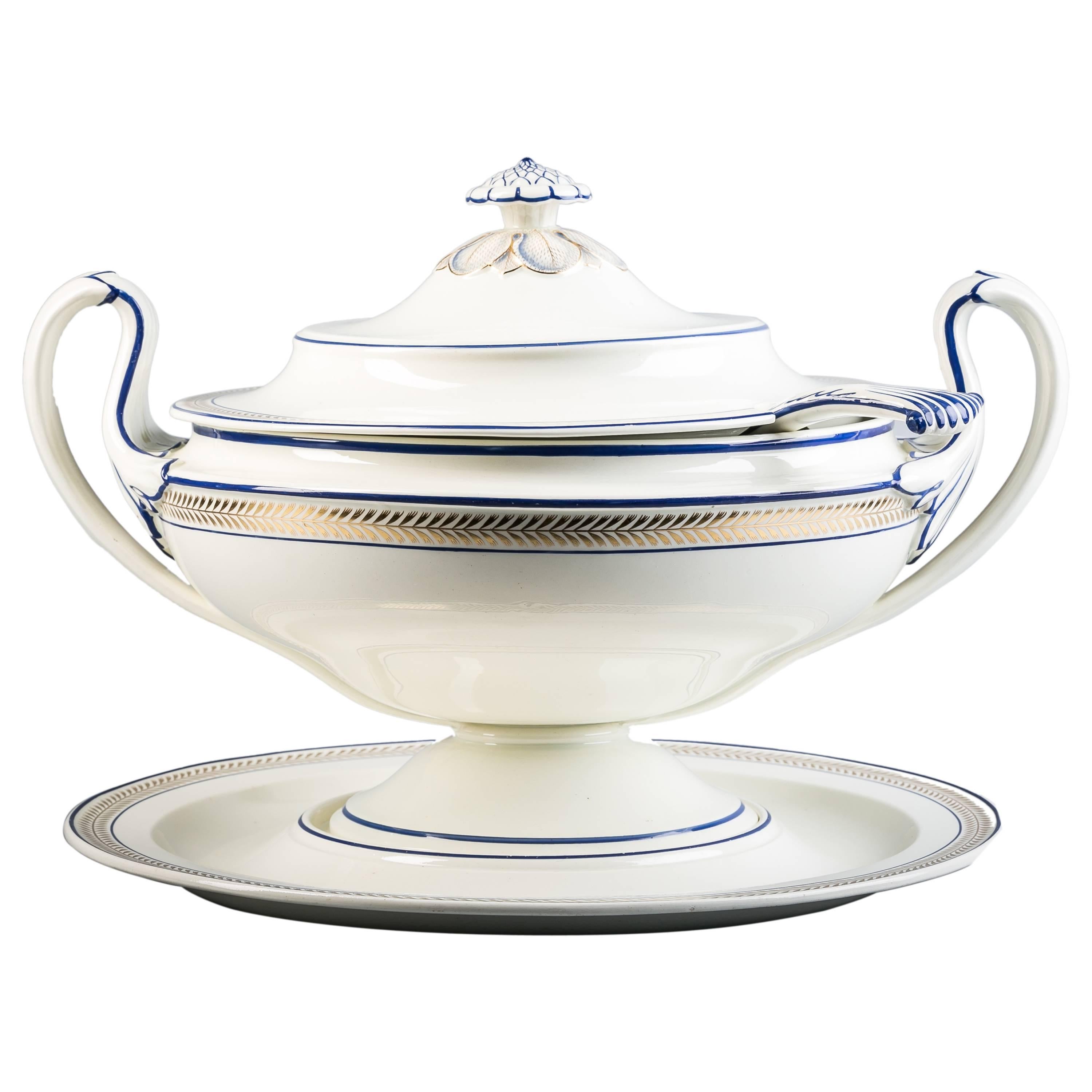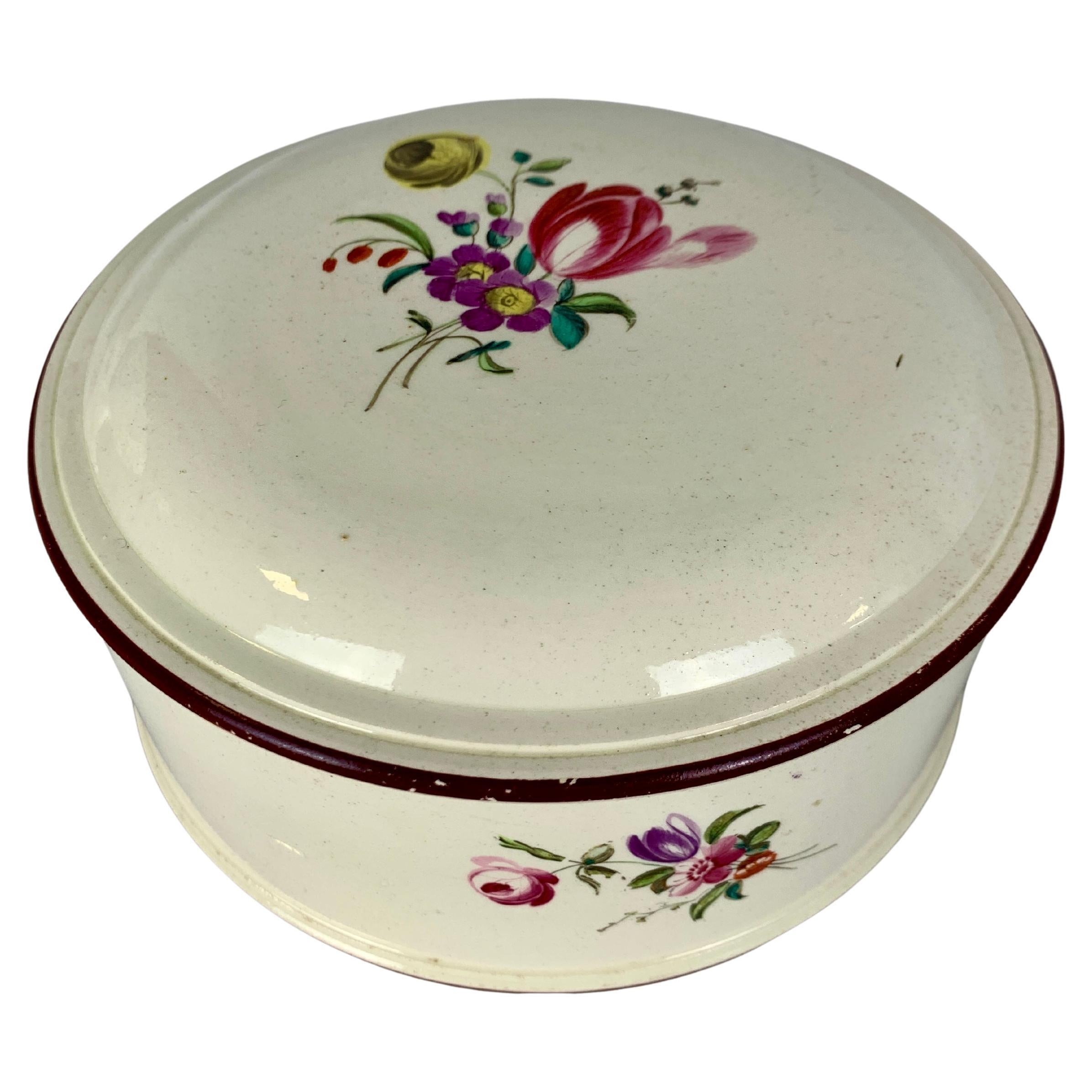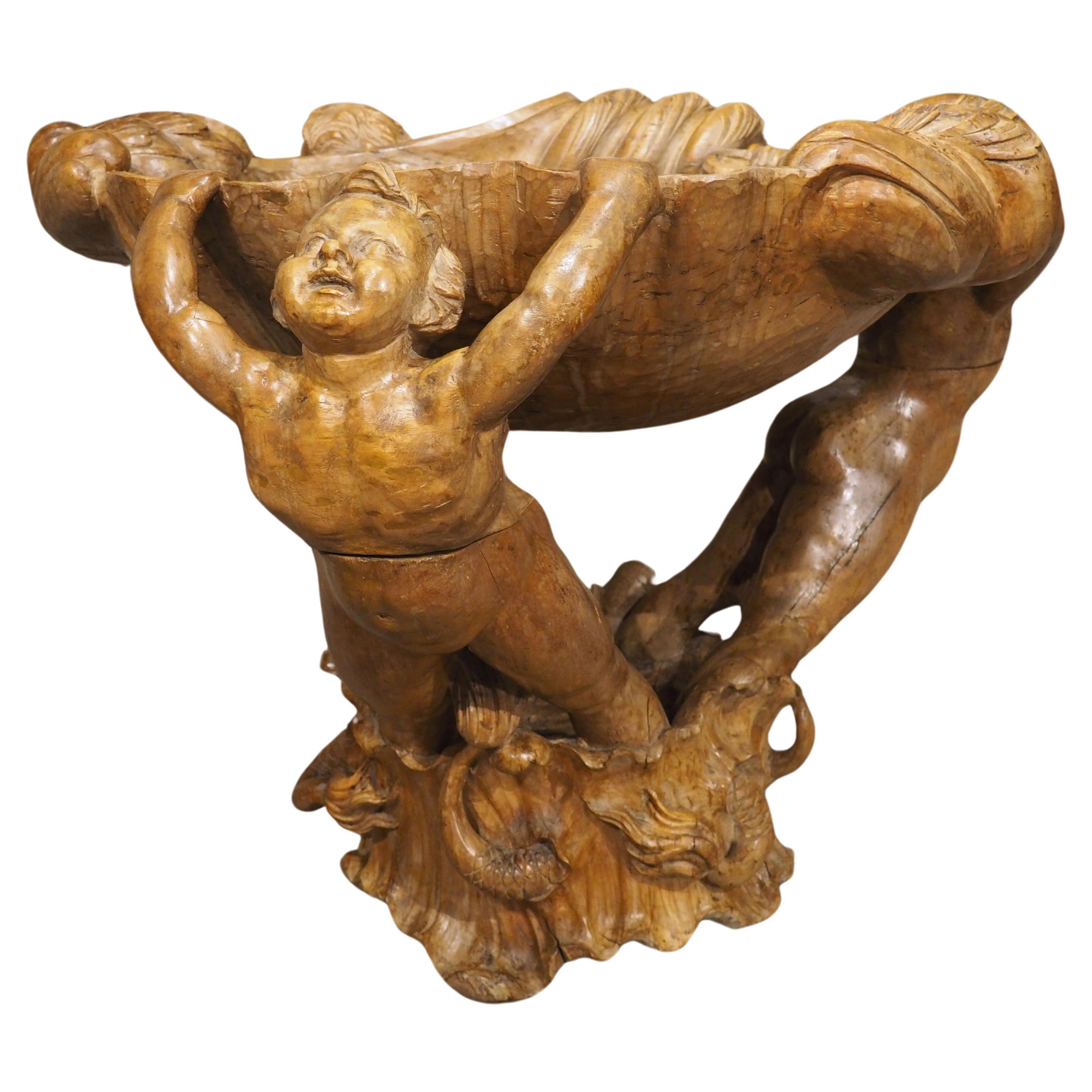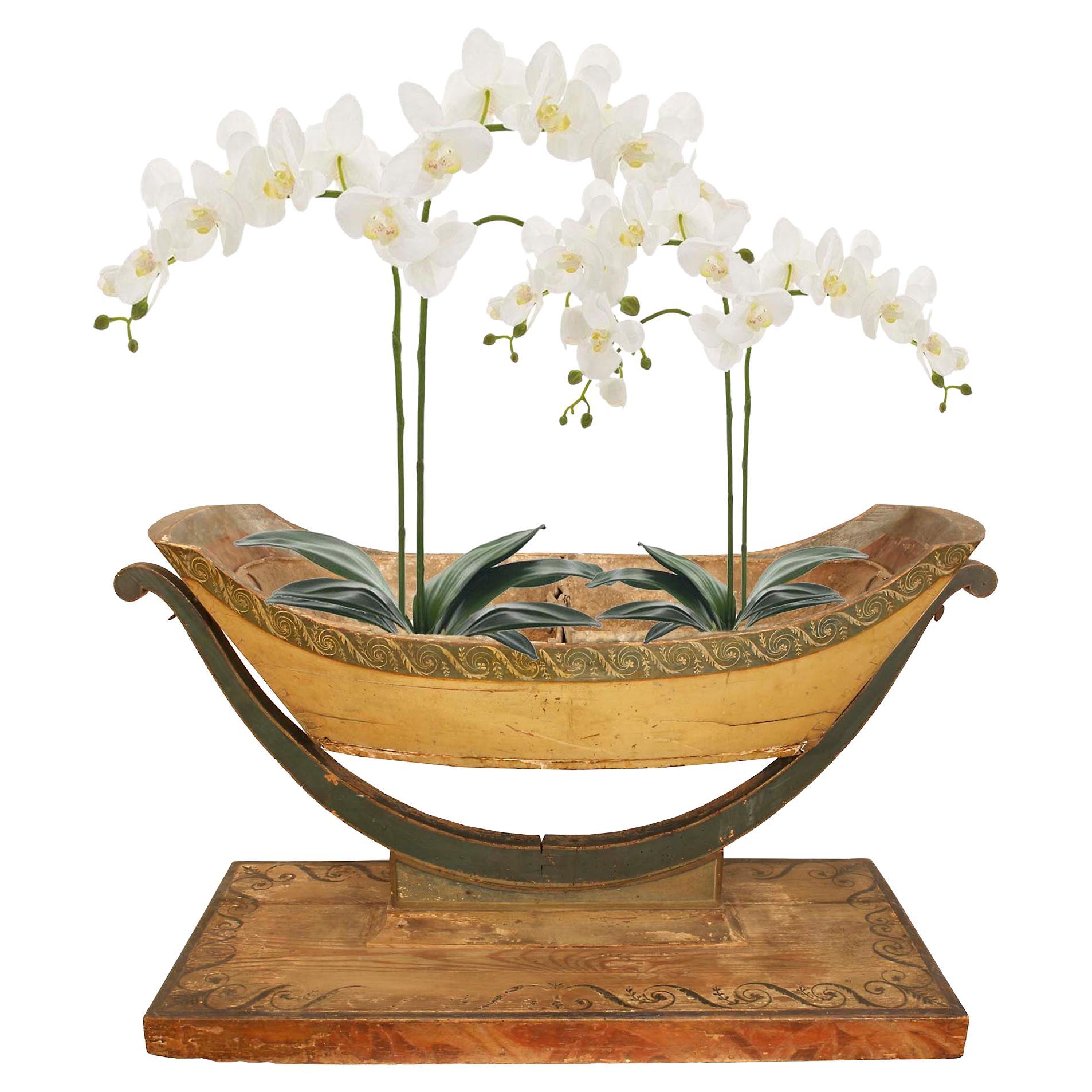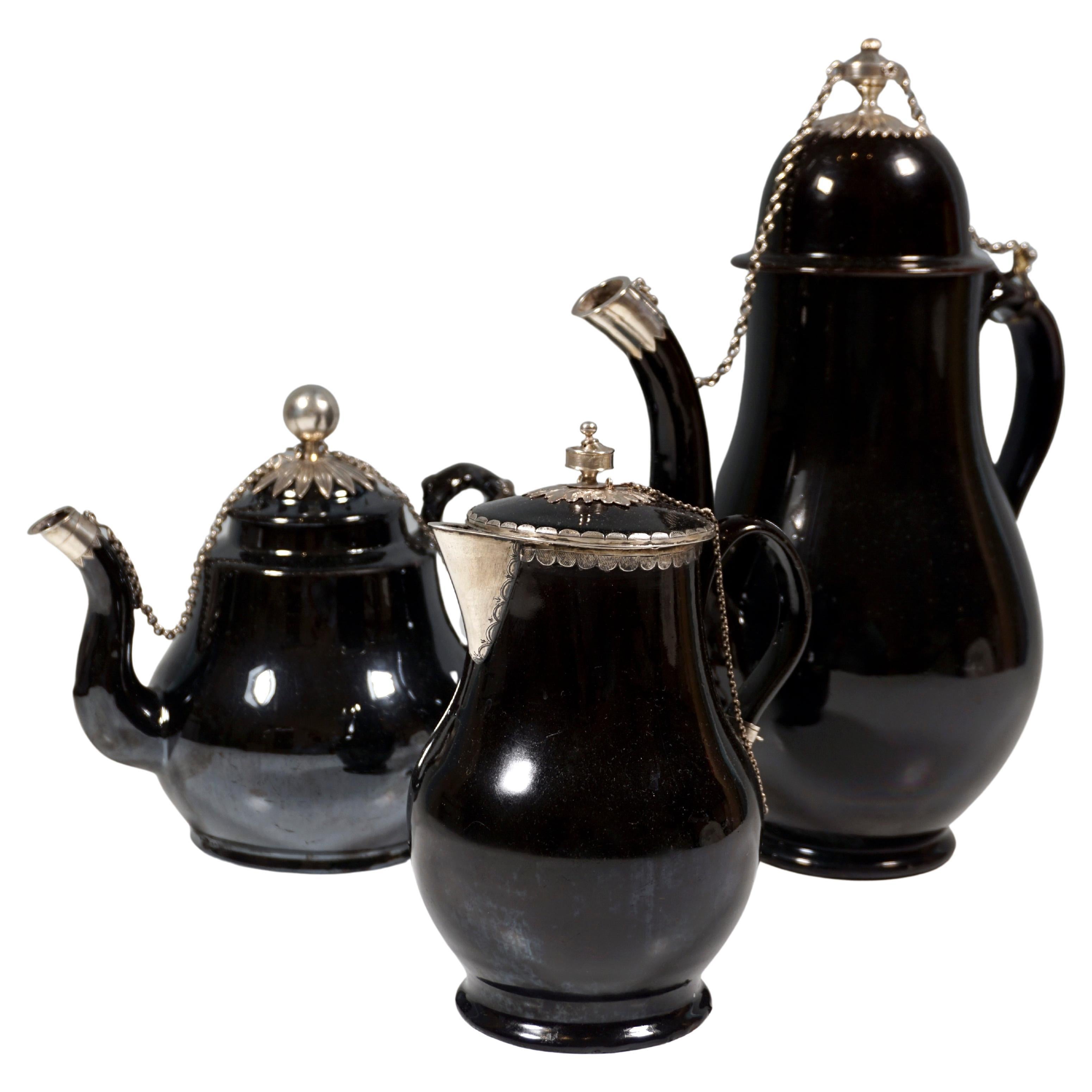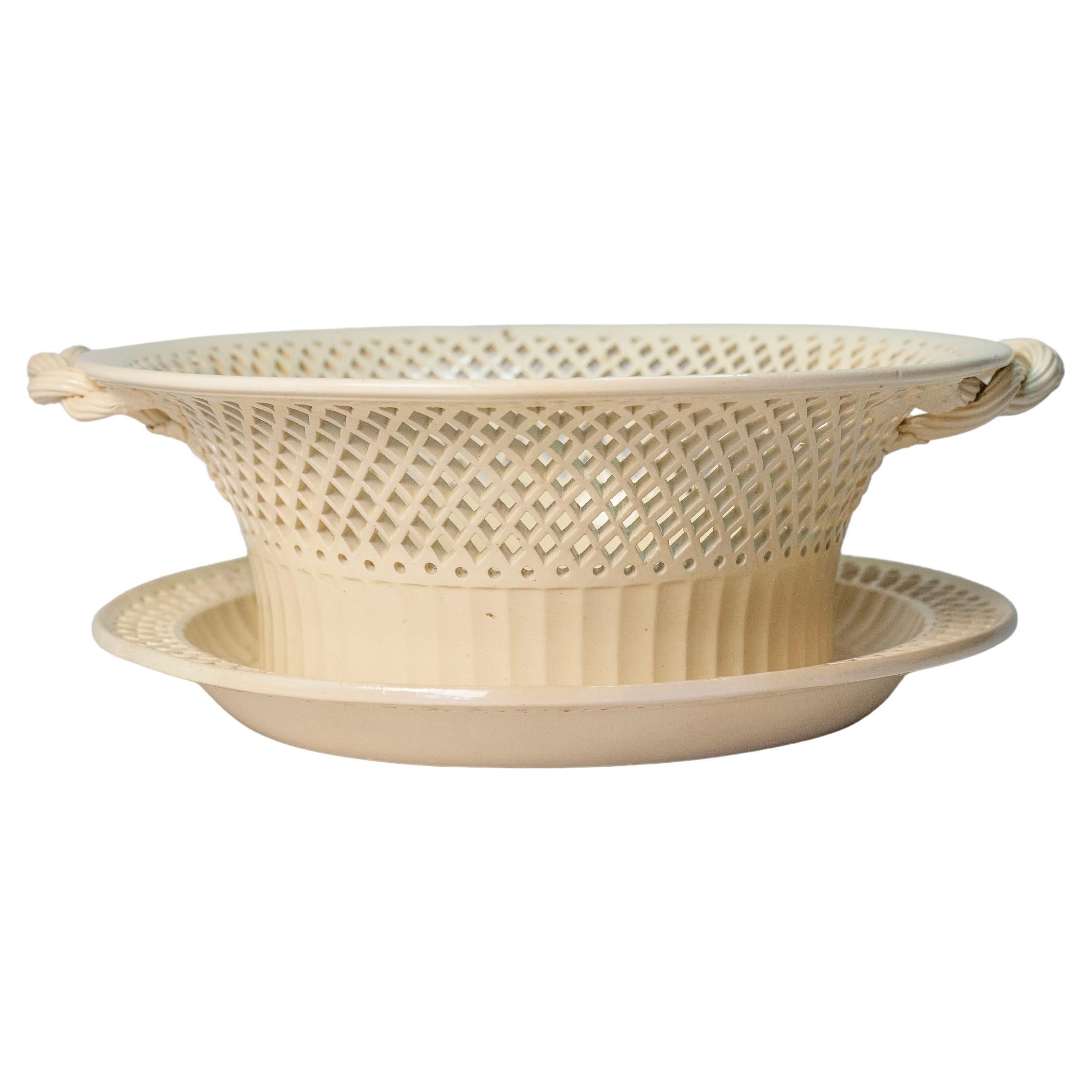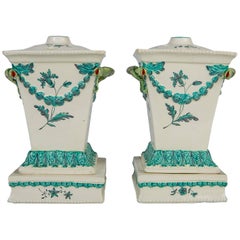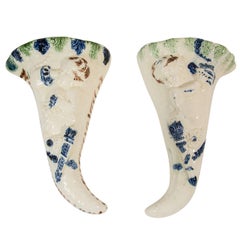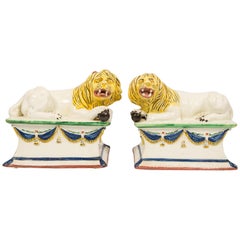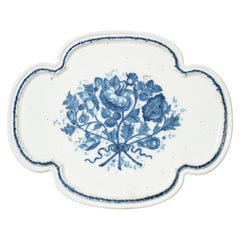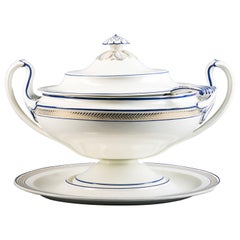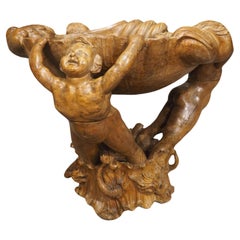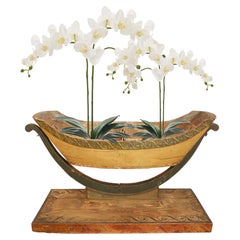
Antique English Creamware 18th Century Sweetmeat Platt Menage circa 1780-1790
View Similar Items
Want more images or videos?
Request additional images or videos from the seller
1 of 9
Antique English Creamware 18th Century Sweetmeat Platt Menage circa 1780-1790
About the Item
- Attributed to:Leeds Pottery (Manufacturer)
- Dimensions:Height: 14 in (35.56 cm)Diameter: 10.25 in (26.04 cm)
- Style:Rococo (Of the Period)
- Materials and Techniques:Creamware,Molded
- Place of Origin:
- Period:
- Date of Manufacture:Circa 1780
- Condition:
- Seller Location:Katonah, NY
- Reference Number:1stDibs: LU866510877923
About the Seller
5.0
Recognized Seller
These prestigious sellers are industry leaders and represent the highest echelon for item quality and design.
Platinum Seller
Premium sellers with a 4.7+ rating and 24-hour response times
Established in 1962
1stDibs seller since 2009
470 sales on 1stDibs
Typical response time: 1 hour
Authenticity Guarantee
In the unlikely event there’s an issue with an item’s authenticity, contact us within 1 year for a full refund. DetailsMoney-Back Guarantee
If your item is not as described, is damaged in transit, or does not arrive, contact us within 7 days for a full refund. Details24-Hour Cancellation
You have a 24-hour grace period in which to reconsider your purchase, with no questions asked.Vetted Professional Sellers
Our world-class sellers must adhere to strict standards for service and quality, maintaining the integrity of our listings.Price-Match Guarantee
If you find that a seller listed the same item for a lower price elsewhere, we’ll match it.Trusted Global Delivery
Our best-in-class carrier network provides specialized shipping options worldwide, including custom delivery.More From This Seller
View AllPair Creamware Vases 18th Century English with Turquoise Trim Circa 1780
By Neale & Co.
Located in Katonah, NY
WHY WE LOVE IT: One of our absolute favorites!
A pair of 18th-century creamware flower holders complete with stands and covers made in England by Neale & Co. was one of the finest 18th century English potteries. The entire composition is classically elegant. The flower holders are decorated with turquoise swags and delicately painted flowers. The tops are pierced for flower stems. The handles are made in a pair of entwined snakes painted in turquoise with bright red mouths. This flower holder could be used with the tops for individual stems or without the tops for a bouquet. All parts of the set have survived and remained together for the past 200 years.
History of Creamware:
Creamware is the name given to a type of earthenware pottery made from cream-colored clays from Dorset and Devonshire combined with calcined flint.
Creamware was first produced in England sometime before 1740. Foremost of the pioneers of creamware in the Staffordshire Potteries was Thomas Whieldon. He produced a wide variety of creamware. The young Josiah Wedgwood was in partnership with Thomas Whieldon from 1754-1759. When Wedgwood left to set up his own business, he immediately directed his efforts to develop creamware. Many of the Staffordshire Potteries, especially Neale & Co., learned from Whieldon and Wedgwood and developed their own excellent creamware products.
Dated: 1795 to 1810 Hanley Staffordshire...
Category
Antique Late 18th Century English Neoclassical Vases
Materials
Creamware
Leeds Pottery Creamware Wall Pockets Pair, 18th Century English Circa 1790
By Leeds Pottery
Located in Katonah, NY
This pair of 18th-century English creamware wall pockets is hand-painted in the neoclassical style.
Made at Leeds Pottery around 1790, they feature decorative designs in green, blue, and light brown. The molded decoration is raised and showcases a putti (a cherubic figure) holding a flaming brazier, symbolizing winter, with a quiver by his side.
The corresponding wall pocket represents autumn, depicting a putti drinking from a jug, also with a quiver at his side.
An identical pair can be found in the collection of The V&A Museum, with item numbers 414:1166-1885 and 414:1166/A-1885. Both pieces were acquired by The V&A Museum from Lady Charlotte...
Category
Antique Late 18th Century English Neoclassical Decorative Art
Materials
Creamware, Pottery
Pair Meissen Style Creamware Dishes 18th Century England Hand Painted Circa 1780
Located in Katonah, NY
This is a pair of English creamware dishes from the 18th century, created around 1780. The plates display a lovely chinoiserie scene in the Meissen style, with women selecting access...
Category
Antique Late 18th Century English Chinoiserie Ceramics
Materials
Creamware
Antique Lion Figures French Creamware 18th Century
Located in Katonah, NY
We are thrilled to offer this exceptional pair of creamware lions, each elegantly resting on a tall base adorned with sumptuous swags of dark blue "curtains" with gleaming yellow tassels and trim.
Crafted in France, these figures are unparalleled and truly a masterpiece of 18th-century creamware.
They date back to the late 18th century, circa 1790. Each lion's head and mane is exquisitely painted with vibrant yellow and lined in striking midnight brown. Their mouths are painted in delicate pink, adding an extra touch of charm.
Not only are these lions a sight to behold, but they will also bring a touch of humor to your home. Their jovial expressions make it impossible not to laugh along with them.
Leisurely resting on cushions draped with rich fabric and tassels, these friendly lions exude a very French attitude, seamlessly blending formality and friendliness.
Placed on a mantel, they would undoubtedly be the focal point of any room, commanding attention, and admiration from all who see them. These lions are genuinely a one-of-a-kind treasure that is not to be missed.
Dimensions: 6.5 inches tall x 6.75 inches long x 4.5 inches wide
Condition: Excellent
Price: $2,300
Background of creamware
Creamware is the name given to a type of earthenware pottery initially made from white clays from Dorset and Devonshire combined with an amount of calcined flint.
Creamware was first produced in England sometime before 1740. Foremost of the pioneers of creamware in the Staffordshire Potteries was Thomas Whieldon. The young Josiah Wedgwood partnered with Thomas Whieldon from 1754-1759. When Wedgwood left to set up his own business, he immediately directed his efforts to developing creamware.
Around the same time, in the mid-18th century, French potters developed their creamware known in France as "Faience Fine...
Category
Antique Late 18th Century French Neoclassical Animal Sculptures
Materials
Creamware
Antique 18th Century Creamware Covered Box Made circa 1780
Located in Katonah, NY
We are pleased to offer this sweet 18th-century English creamware covered box decorated with well-painted sprigs of flowers on the cover and along the sides of the circular box (see ...
Category
Antique 1780s English Rococo Pottery
Materials
Creamware
18th Century English Creamware Tureen by Leeds Pottery Circa 1785
By Leeds Pottery
Located in Katonah, NY
This rare and beautifully modeled creamware soup tureen was made by Leeds Pottery around 1780.
It features a domed lid topped with a loop finial adorned with applied flowers and foli...
Category
Antique Late 18th Century Neoclassical Soup Tureens
Materials
Creamware
You May Also Like
18th Century Italian Maiolica Centerpiece Bassano Venice, circa 1750
Located in Milano, IT
Maiolica centerpiece
Pasquale Antonibon factory
Nove di Bassano, Venice, 1740-1770.
Measures: 1.85 in x 19.21 in x 15.27 in
4.7 cm X 48.8 cm X 38.8 cm.
lb 5.29 (kg 2.4)
State of conservation: thin passing fêlure with covered chipping and a glued foot
The Antonibon were an important family of Venetian...
Category
Antique 1750s Italian Baroque Ceramics
Materials
Maiolica
English Creamware Covered Soup Tureen and Stand, Wedgwood, circa 1790
Located in New York, NY
English creamware covered soup tureen and stand, Wedgwood, circa 1790.
Impressed Wedgwood.
Category
Antique 1790s English Centerpieces
Unusual 18th Century Venetian Center Piece in Carved Walnut Wood, Circa 1780
Located in Dallas, TX
Although the Rococo in France (where the style originated) lasted from roughly 1725 to 1760, other countries in Europe produced period art and furniture until the late 18th century. One such country was Italy and in particular, Venice, where this unusual carved walnut centerpiece was hand-carved, circa 1780. A large shell-form bowl with volute leaf embellishments is being held by three putti emerging from an undulating base. The wave pattern is reminiscent of a foaming sea, further indicated by the stylized dolphin tails emerging from the spray. All of the tails are textured with a lozenge-patterned background, protruding as high-relief elements. On the underside, the scalloped tips of the water swing down in three areas, forming well-disguised feet. The carvings of the centerpiece are quite exceptional, given the height and breadth of the piece. A wonderful decorative accessory for any large table, our walnut Venetian centerpiece...
Category
Antique Late 18th Century Italian Rococo Centerpieces
Materials
Wood, Walnut
Italian 18th Century Venetian Patinated Wood Planter, circa 1780
Located in West Palm Beach, FL
An extremely charming and unusual Italian 18th century Venetian patinated wood planter, circa 1780. The gondola shaped planter is raised on a rectangular base with hand painted rince...
Category
Antique 18th Century Italian Centerpieces
Materials
Wood
Late 18th Century Terre De Namur Core Piece, Coffee Tee & Milk, Belgium
Located in Vienna, AT
3-part core piece consisting of coffee pot, teapot and milk jug made of Terre de Namur ceramics.
Terre de Namur
The fine black faience is a particular product of Namur, Belgium, lat...
Category
Antique Late 18th Century Belgian Baroque Ceramics
Materials
Porcelain
A Large Creamware reticulated basket and undertray, English, Circa 18th Century
By Leeds Pottery
Located in Scottsdale, AZ
A Large Creamware reticulated basket and under tray, English, Circa 18th Century. Absolutely Beautiful! Provenance: The John Howard Collection....
Category
Antique 18th Century English Early Victorian Pottery
Materials
Creamware
$7,120 Sale Price / set
20% Off
Recently Viewed
View AllMore Ways To Browse
Antique Temple Model
Antique Sugar Mold
Antique Leeds Creamware
19th Century French Crystal Centerpiece
19th Century Glass Compote
Antique Figural Silver Centerpiece
Albert Mayer Wmf
Antique Cherub Bowl
Antique Epergne Centerpiece
Antique Plateau Mirror
American Drew Dining Set Used
Antique Ostrich
Antique French Compote
Antique Silver Table Centrepieces
Antique Hand Cut Crystal Bowl
Antique Epergne Glass Vases
19th Century Epergne
Antique Victorian Glass Epergne
